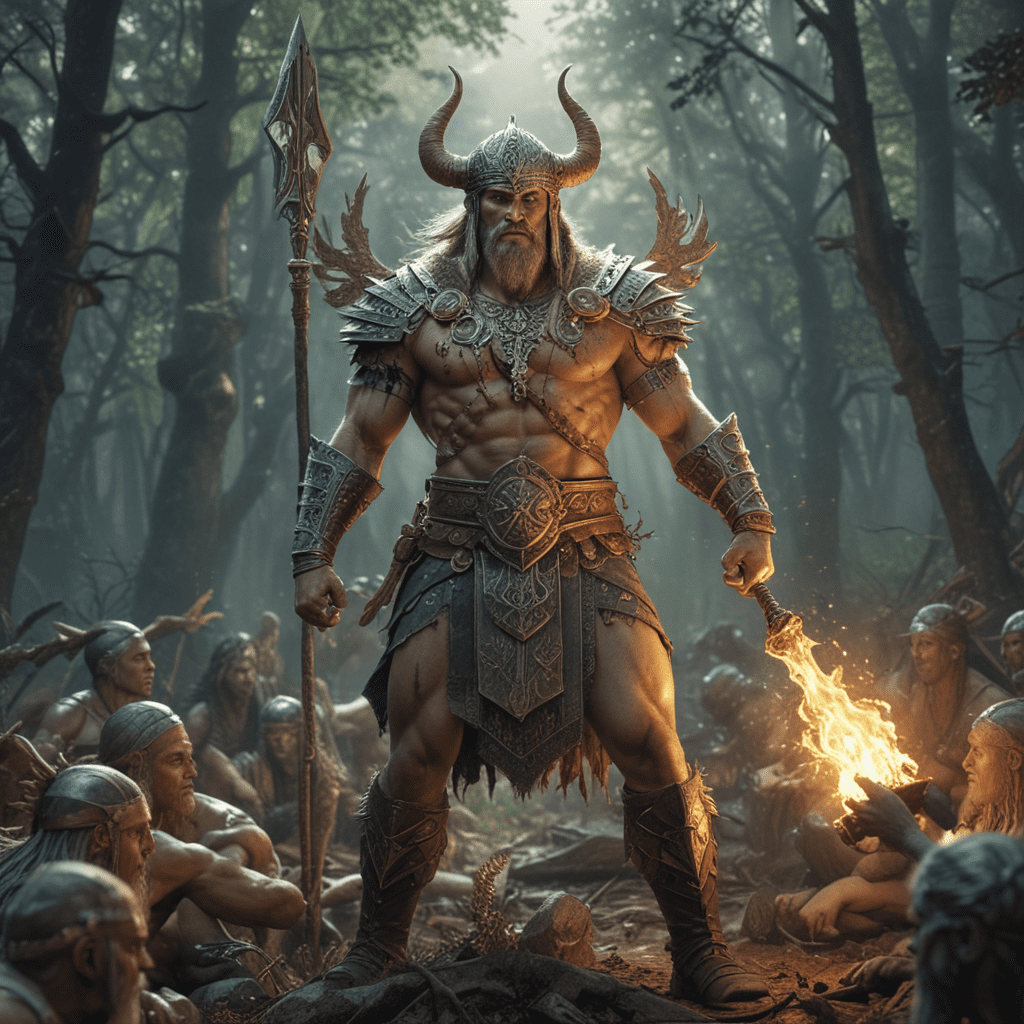The Deathless in Literature: Koschei’s Influence on Writers and Poets
I. Introduction
The concept of “The Deathless” permeates various folklore traditions, symbolizing beings that defy mortality and possess unique powers over life and death. In Slavic mythology, one of the most notable figures representing this archetype is Koschei the Deathless, a character whose narrative has captivated audiences for centuries.
Koschei’s origins can be traced back to ancient Slavic tales, where he is depicted as a powerful sorcerer, often portrayed as an antagonist. His defining characteristic is his immortality, which is intricately linked to a hidden object that contains his life force, making him a figure of both fear and fascination.
This article explores Koschei’s significance in literature and culture, examining how his mythos has influenced writers and poets across generations and across different cultures.
II. Koschei the Deathless: A Folkloric Archetype
Koschei’s role in Slavic mythology offers a rich historical context for understanding his character. Often depicted as an evil sorcerer who kidnaps princesses and challenges heroes, Koschei embodies the archetype of the antagonist, representing the darker aspects of immortality.
His narratives are imbued with thematic elements such as:
- The struggle against death and the quest for life
- The consequences of seeking power and immortality
- The duality of existence, where life and death are intertwined
These themes resonate deeply within the human experience, reflecting our fears and desires related to mortality.
III. The Concept of Immortality in Literature
Immortality is a pervasive theme in literature, explored through various cultural lenses. From the ancient Epic of Gilgamesh to the gothic tales of Dracula, immortal figures often serve as reflections of humanity’s relationship with life, death, and the quest for meaning.
Koschei can be compared to other iconic immortal figures, such as:
- Gilgamesh: A king who seeks eternal life but ultimately learns to accept his mortality.
- Dracula: A vampire who embodies the allure and horror of eternal life, often preying on the living.
These characters highlight the moral implications of immortality, raising questions about the nature of existence, the weight of eternal life, and the inevitable decay that follows. Each story serves as a cautionary tale about the perils of seeking to escape death.
IV. Koschei’s Influence on Russian Literature
Koschei the Deathless has left an indelible mark on Russian literature, appearing in numerous folk tales and literary works. Notable examples include:
- Traditional Russian fairy tales where he often plays the role of the villain.
- Alexander Pushkin’s works, where elements of the Koschei myth are woven into narratives exploring themes of love and power.
In contemporary Russian literature, Koschei’s character continues to be reimagined, often symbolizing the struggle for power and the vulnerability that accompanies it. His presence in these works reflects a deeper understanding of humanity’s flaws and the complexities of desire.
V. The Deathless in Poetry
The influence of Koschei extends into the realm of poetry, inspiring notable poets such as Anna Akhmatova and Marina Tsvetaeva. These poets have utilized the themes of death and immortality to enrich their works, often drawing on the symbolism associated with Koschei.
In their poetry, the themes might include:
- The tension between life and death
- The longing for transcendence
- The exploration of existential questions through the lens of myth
Koschei serves as a metaphor for various human experiences, from the struggles of love to the existential dread of mortality, allowing poets to explore the complexities of the human condition.
VI. Cross-Cultural Adaptations of Koschei
Koschei’s myth has transcended Slavic borders, influencing writers outside the traditional folklore, such as Neil Gaiman and Angela Carter. These authors have adapted and reinterpreted the character within their own narratives, demonstrating the versatility of the Deathless theme.
In these adaptations, Koschei is often reimagined in diverse cultural contexts, such as:
- As a symbol of tyranny and oppression in modern political narratives.
- As an embodiment of existential dread in contemporary horror literature.
This cross-cultural influence highlights the universality of the Deathless theme, inviting readers from all backgrounds to engage with the complexities of life, death, and what it means to be human.
VII. The Legacy of Koschei in Modern Literature
In recent years, there has been a resurgence of interest in mythological figures, with contemporary authors reimagining Koschei for modern audiences. This revival allows for a deeper exploration of themes surrounding mortality, power, and the human experience.
Modern interpretations of Koschei often focus on:
- The implications of immortality in a world obsessed with youth and beauty.
- The psychological dimensions of power and vulnerability.
- The ongoing relevance of ancient myths in contemporary society.
Koschei’s story remains pertinent in discussions about existence, serving as a reminder of the fragility of life and the inevitability of death.
VIII. Conclusion
Koschei the Deathless has had a profound and lasting influence on literature and poetry, symbolizing the eternal struggle between life and death. His character invites reflection on the significance of immortal figures in understanding human experience, as they embody our deepest fears and desires.
As literature continues to evolve, the themes surrounding the Deathless will likely remain relevant, providing fertile ground for exploration and interpretation. The enduring legacy of Koschei highlights the importance of myth in our understanding of mortality and existence, ensuring that his story will resonate with future generations.



